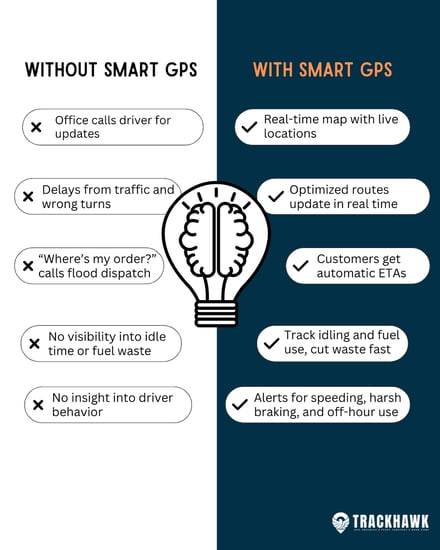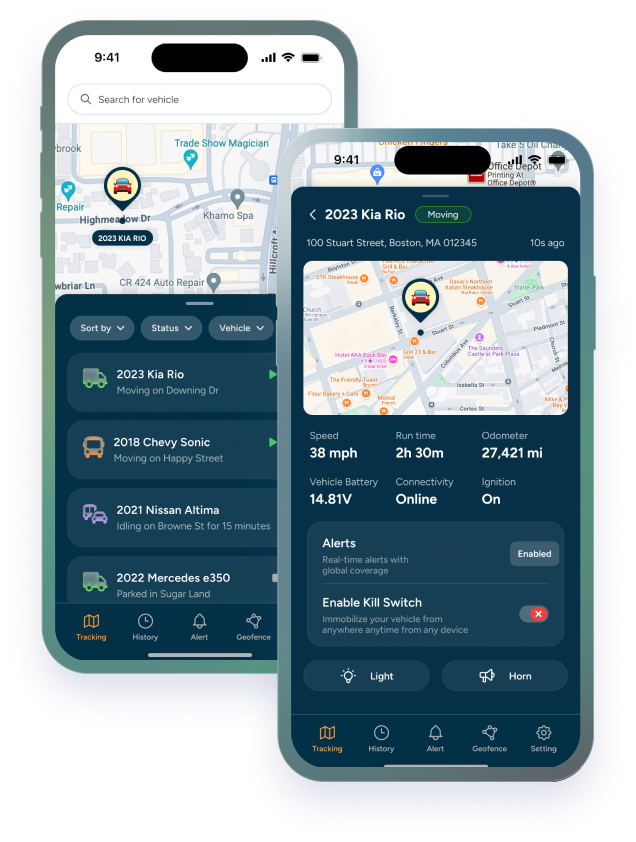The delivery business has never been more competitive, or more unforgiving.
Delivery is one of the most demanding parts of fleet operations. Tight windows, unpredictable traffic, and high customer expectations mean even small disruptions can spoil service, and your reputation. With last-mile delivery forming 53 % of total delivery costs, inefficiency isn’t just frustrating, it’s costly.
Delivery Is Getting Faster - and Harder
The last-mile delivery market is expanding fast, driven by explosive e-commerce growth and new expectations around speed and visibility. According to The Business Research Company, the global last-mile delivery market is projected to grow from $178.9 billion in 2024 to over $324 billion by 2028, with a compound annual growth rate (CAGR) of nearly 13%.

That growth is being fueled by several converging trends:
-
Consumers now expect same-day or next-day delivery as the norm
-
Urban congestion and fuel prices are squeezing margins
-
Businesses face mounting pressure to optimize delivery routes in real time
-
Sustainability goals are pushing fleets to reduce emissions and idle time
The bottom line? Delivery teams are expected to do more with less, reach more customers faster, and resolve more issues in real time, all without sacrificing accuracy.
Missed Deliveries = Missed Revenue
Let’s break it down:
-
A driver gets stuck in traffic and misses three scheduled stops.
-
A customer calls asking for an ETA and no one at the office can help.
-
A delivery is marked complete… but the package was never dropped off.
-
A truck idles for hours daily, wasting fuel and eating into margins.
These are real-world problems, not rare events.
According to a 2023 Capgemini report on last-mile logistics, close to three-fourths of consumers are willing to reward retailers who get the last-mile experience right with increased spend and loyalty while 40% consider delivery service a “must-have” feature for food and grocery products.
.jpg?width=2240&height=1260&name=Untitled%20design%20(53).jpg)
How Smart GPS Turns Chaos Into Control
Smart GPS isn’t just a location pin. It’s a complete visibility and efficiency system for delivery operations. Here's how it solves the real problems delivery teams face:
Real-Time Tracking
-
See every driver’s live location
-
Monitor delays, detours, or long stops
-
Give customers live ETAs without calling the driver
Route Optimization
-
Automatically build efficient multi-stop routes
-
Reroute in real time based on traffic
-
Reduce fuel costs and time per job
Delivery Confirmation
-
Timestamped proof-of-service
-
Photo capture and geotagging
-
Resolve disputes with clear documentation
Risk & Cost Reduction
-
Get alerts for harsh driving, idling, or off-hour vehicle use
-
Reduce wear-and-tear on fleet
-
Track fuel and vehicle usage in one dashboard
We have prepared a quick "cheat sheet" for you. It's your side-by-side snapshot of the difference Smart GPS makes with your delivery operations, so you can take it with you.

So if you’re still managing your fleet with:
-
Generic GPS apps
-
Phone calls for ETAs
-
No real-time tracking
-
Or paper-based proof of delivery...
You're not just falling behind, you're leaving money on the table and risking customer trust.
- Missed windows turn into chargebacks
- Inaccurate routing leads to fuel waste
- No visibility means no accountability
- And “Where’s my order?” becomes your team’s full-time job
As demand grows and customers expect tighter delivery windows, your tech stack can’t afford to stay basic.
Smart GPS in Action: Real Brands That Do It Right
Smart GPS tracking isn’t just for massive fleets or global logistics giants, but they do set the standard. The biggest names in delivery have embraced real-time tracking and automation to eliminate inefficiencies and stay ahead of rising expectations. Here’s how:
Amazon
Amazon’s entire delivery model runs on smart logistics. With its Amazon Logistics platform and Delivery Service Partner program, drivers are guided by real-time GPS tracking, route optimization, and delivery photo confirmation all integrated into the Amazon Flex app. This allows Amazon to hit same-day and next-day windows at scale.
DHL
DHL uses advanced GPS telematics and AI-powered route planning to monitor its delivery vans worldwide. Their “SmartTruck” system reduces idle time, adapts to traffic conditions in real time, and even gives customers live tracking links with ETAs.
UPS
UPS’s proprietary tool, ORION (On-Road Integrated Optimization and Navigation), uses smart GPS and algorithms to create the most efficient delivery routes, saving the company millions in fuel costs annually. Each driver gets a dynamically optimized route that adapts based on real-world conditions.
If global leaders are investing heavily in smart delivery tools, it’s not just for speed, it’s for visibility, accuracy, and customer satisfaction.
And thanks to platforms like Trackhawk GPS, these same capabilities are now accessible to businesses of all sizes.
Next Steps for Your Fleet
-
Audit your delivery workflow, where are delays being caused?
-
Choose a Smart GPS system with real-time tracking, route automation, and driver alerts.
-
Integrate GPS with your dispatch and customer notification platforms.
-
Launch a pilot program to test, track results, and scale for every driver.
Delivery Shouldn’t Be This Hard.
Trackhawk GPS simplifies it with real-time data, route automation, and customer-ready tools.
👉 Book a Demo today to see how smart GPS fits your delivery ops.
